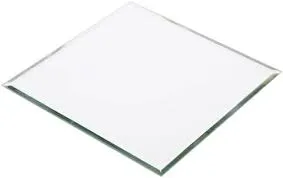

The Elegance of Plain Frosted Glass A Modern Touch in Design
In the realm of contemporary architecture and interior design, materials play a pivotal role in shaping the aesthetic and functional qualities of a space. Among these materials, plain frosted glass stands out as a versatile and sophisticated choice. This seemingly simple medium enhances both privacy and light diffusion, making it a preferred option for various applications, from residential spaces to commercial settings.
Frosted glass is created by treating clear glass with an acid etching process or sandblasting, resulting in a surface that scatters light while obscuring visibility. The outcome is a subtle and elegant finish that transforms ordinary glass into a work of art. Unlike tinted glass, which alters color perception, plain frosted glass maintains a neutral tone, thereby seamlessly fitting into diverse design themes.
One of the most significant advantages of frosted glass is its ability to provide privacy without sacrificing natural light. This characteristic makes it an ideal choice for bathrooms, offices, and conference rooms. In residential settings, frosted glass can be used in shower enclosures or as window treatments, allowing sunlight to penetrate while shielding occupants from prying eyes. In commercial spaces, frosted glass partitions can delineate work areas or conference rooms, fostering an open yet intimate atmosphere conducive to collaboration.
Moreover, plain frosted glass offers a modern aesthetic that complements minimalist design principles. Its clean and understated look aligns perfectly with contemporary décor, providing a sense of calm and clarity. In a world that often feels chaotic, incorporating frosted glass into various elements of design can create a sanctuary-like ambiance, promoting relaxation and focus.

The versatility of frosted glass extends beyond its applications; it can also be custom-designed to enhance specific design concepts. For instance, it can be combined with various framing materials, such as wood, metal, or synthetic composites, allowing designers to curate unique visual experiences. Incorporating hints of color or patterns through gradient frosted glass can also add a personalized touch while still preserving its fundamental qualities.
In addition to its aesthetic and functional benefits, frosted glass is a sustainable choice for modern design. It can be manufactured with energy-efficient practices and contributes to thermal regulation in buildings. By using frosted glass in windows or facades, designers can minimize reliance on artificial lighting, thus reducing energy consumption and carbon footprints. This makes it not only an elegant option but also an eco-friendly one.
Frosted glass also has implications for sound insulation. The unique properties of the material can help reduce noise transmission, making it ideal for spaces that require a certain level of quietness, such as meditation rooms, libraries, or private offices. This multifaceted utility makes plain frosted glass a preferred choice for those looking to create harmonious environments.
In conclusion, plain frosted glass is a remarkable material that encapsulates elegance and functionality. Its ability to provide privacy, diffuse light, and contribute to modern aesthetics makes it a popular choice among architects and designers. As trends in sustainable design and minimalist aesthetics continue to evolve, the role of frosted glass will likely expand, cementing its place as a cherished material in contemporary architecture. Whether used in vast commercial spaces or intimate residential settings, plain frosted glass undoubtedly adds a touch of sophistication, transforming ordinary spaces into extraordinary ones. Its timeless appeal ensures that it will remain a favored element in the world of design for years to come.